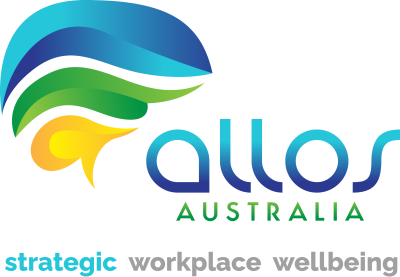This post is part of our series on The 5 Evidence-based Foundations of a Mentally Healthy Workplace.
What does ‘Supportive Structure’ mean in the workplace?
Supportive workplace structure refers to structure or policy at an organisational level which creates a safe and supportive working environment for all employed.
What does a supportive structure look like in the workplace?
Supportive structure looks different across workplaces according to the demands of the job and the potential impacts on worker health. Organisational support required for healthcare workers is going to differ from labourers, which again will differ from office-based jobs and then again within each individual workplace. While there is no one-size-fits-all approach, there is one common denominator across mentally healthy workplaces: both physical AND mental wellbeing is considered equally.
True supportive workplace structure should have adequate, appropriate and clear policies, procedures and supports available to all employees. These supportive structures should equally address relevant physical and mental health risks, with easily accessible stigma-free support readily available.
Mentally healthy workplaces ensure their supportive structures address mental health in the same way as physical health and safety. Supportive structure around mental health might include (but are not limited to):
- Clear bullying & harassment policies – Clear, no-tolerance policies around workplace bullying and harassment are non-negotiable. While plans to deal with bullying that has occurred are important, focus should be on preventive strategies. Education, culture and role modelling leaders are all important contributors to a preventative framework. Accessible and clear reporting avenues are also important to minimise harm by catching issues early.
- Adequate breaks – Mentally healthy workplaces ensure their employees are aware of their break entitlements and take them accordingly. Regular rest and meal breaks are well-known mental health protective factors.
- Mental health education – Regular educational seminars and workshops such as mental health first-aid training are highly beneficial preventative structures. Quality training and education improves mental health literacy within the workplace and consequently overall workplace mental health.
- Proactive EAP – When employees are encouraged to utilise accessible EAP, healthy behaviours are more likely to form throughout the workplace. As covered in our Community Mindset blog, healthy workplace behaviours and relationships are integral components of a mentally healthy workplace.
Sensitive leave & return to work arrangements – While sick leave for physical illness or injury is commonplace, the same leave for mental health related illness or hardship is often still taboo. Sensitive, stigma-free structures for workers in need of mental health leave and return to work assistance are extremely important. Policy with room for understanding individual circumstances is more likely to assist workers where and how they need it most.
What are the benefits of supportive structure in the workplace?
Truly supportive structures benefit workplaces not only through the impact of each specific policy, but also through broader cultural influence. Workplaces with clear mental-health focused policies, supports and education help create a psychologically safe space for employees. When employees feel their workplace is psychologically safe, they are more likely to seek help when needed. Help-seeking behaviours further contribute to the overall preventative and protective culture of the workplace, increasing productivity, and job satisfaction.
What now?
Supportive organisational structure can be an amazing thing, but like many amazing things it does not come easy. If reworking supportive structures is important to your workplace, EAP can help you get started.
EAP services with proactive approaches can help assess your workplace’s individual strengths and weaknesses. As each workplace is unique, EAP can also provide tailored hands-on assistance through workshops and counselling if needed. Proactive EAP is an invaluable tool to not only creating but maintaining a mentally healthy workplace with rock solid supportive structure.
While some may view EAP as a temporary band-aid for when big things go wrong, proactive EAP can offer so much more. Proactive EAP takes the prevention is better than cure approach to workplace wellbeing, helping organisations implement effective support systems, policies and programs to improve worker wellbeing and productivity.
“ The measurement of good policy is the well-being of the community.” – Raul Ruiz

